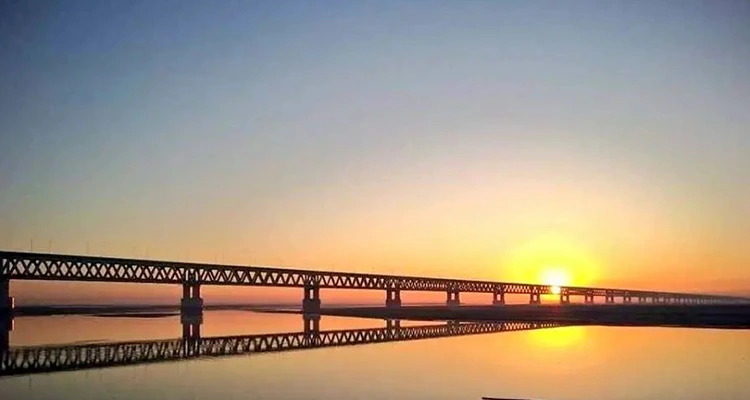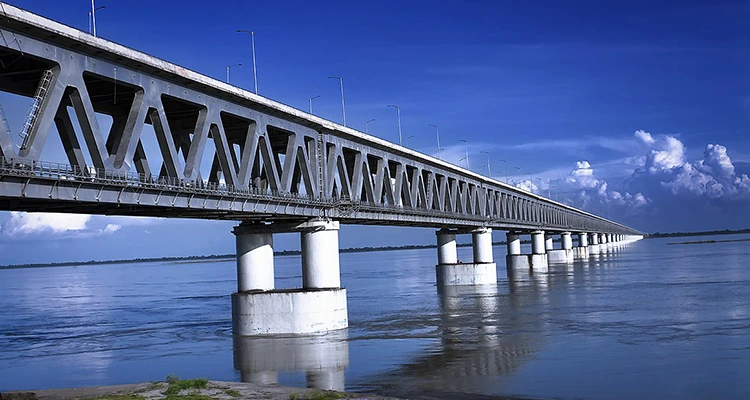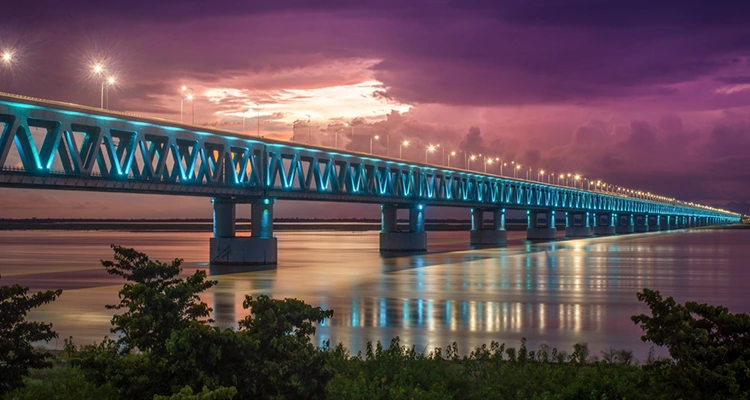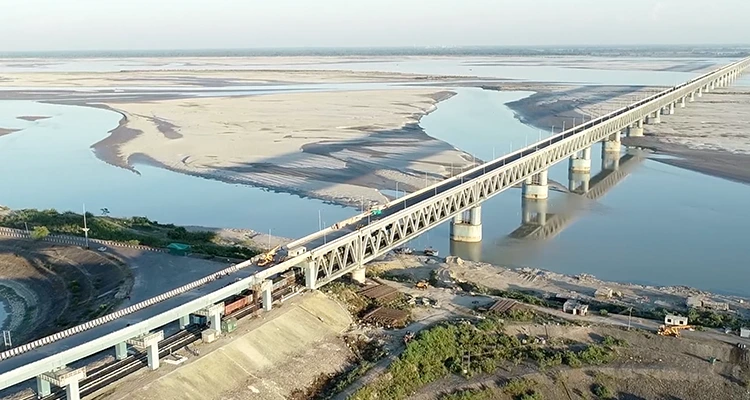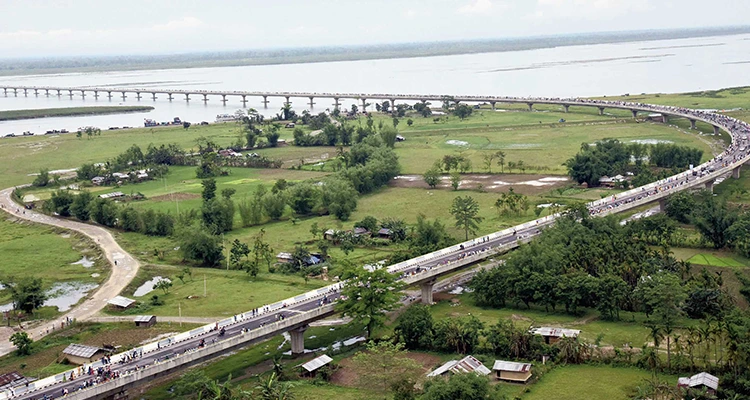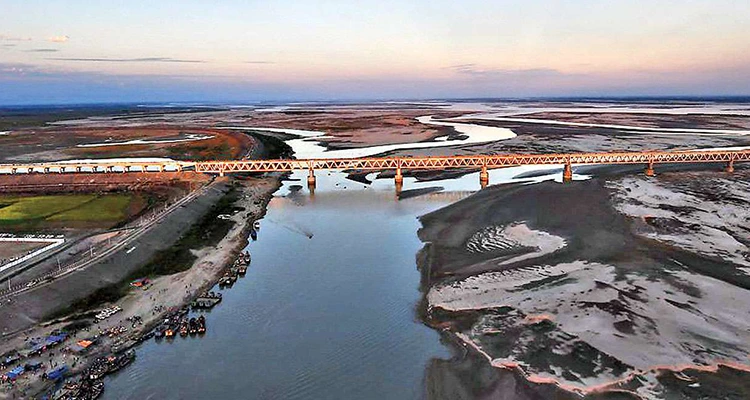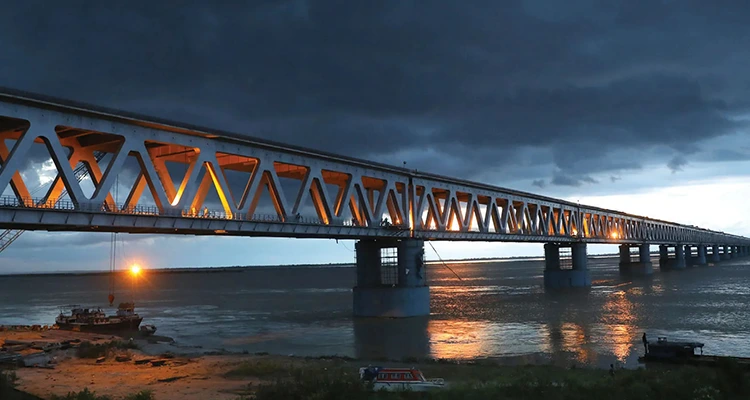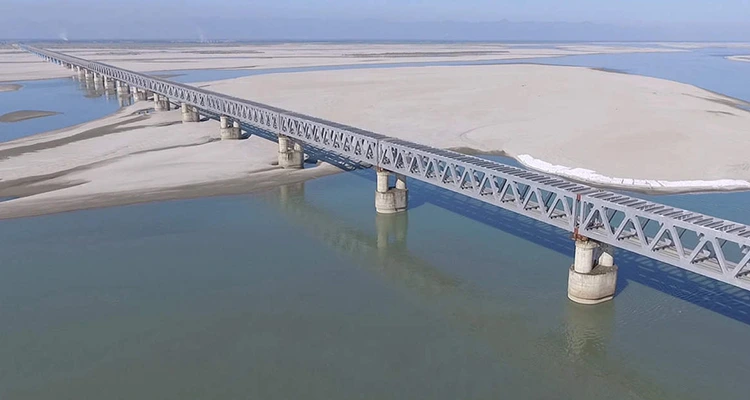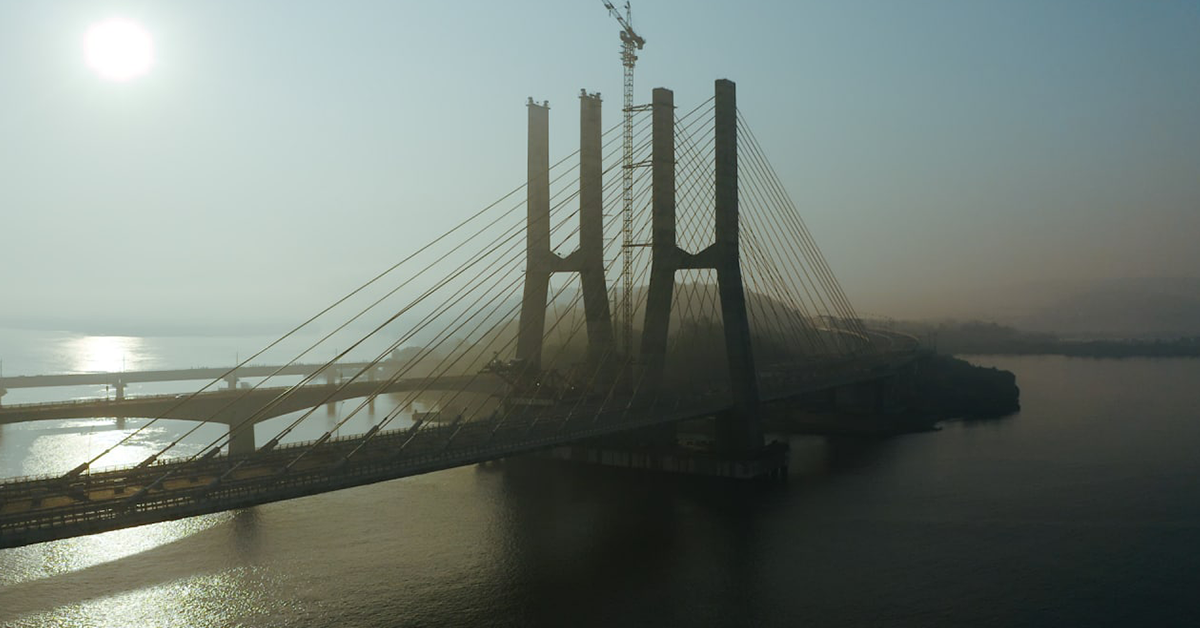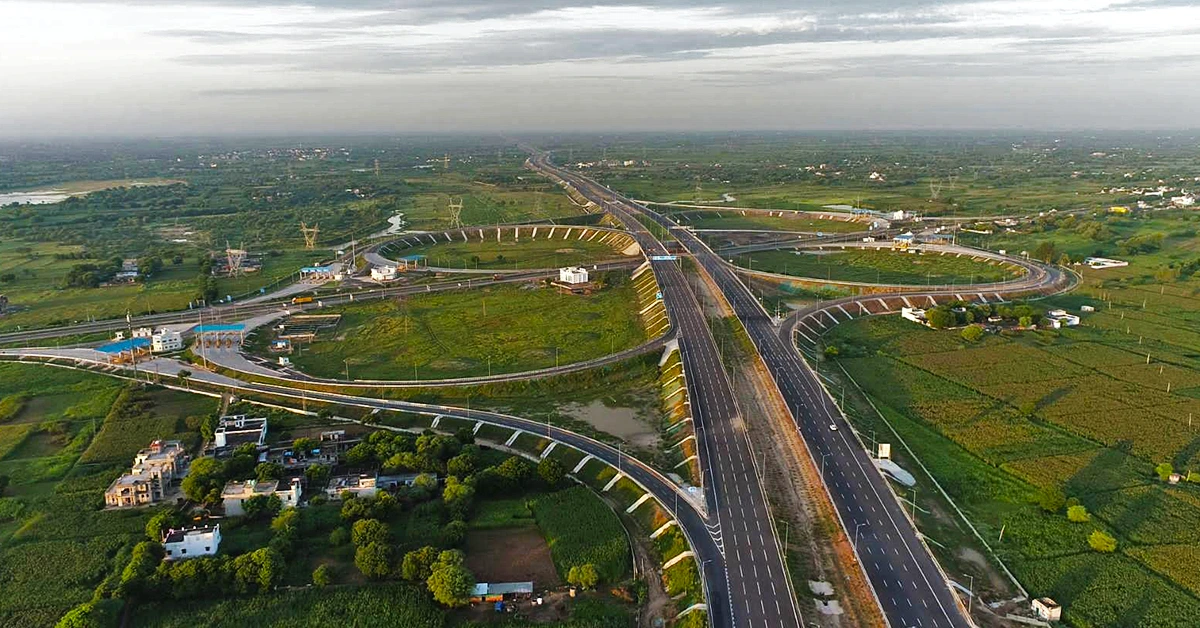Atal Setu or the Mandovi River Bridge, a dream project of Goa Chief Minister Manohar Parrikar is expected to decongest Panaji traffic and serve as a bypass for those who want to travel from north to south without entering Panaji.
Bogibeel Bridge
The Bogibeel bridge over the Brahmaputra will boost defence logistics along the China border and increase the economic activity of the long-time neglected Northeast region.
Read Time: 5 minutes
click play to listen to the article
Prime Minister Narendra Modi inaugurated the Bogibeel bridge in Assam on 25 December 2018. The inauguration of the double-decker — rail-cum-road Bogibeel Bridge across the Brahmaputra River in Assam is an important milestone in improving connectivity in northeast India. This 4.94 km-long bridge, built on the Brahmaputra river boasts of being Asia’s second longest rail-cum-road bridge and India’s first completely welded bridge. It is a part of infrastructure projects planned by the Modi government to improve logistics along the border in Arunachal Pradesh. Further, enhanced connectivity in the Northeast will increase the economic activity of the long-time neglected region.
The Bogibeel bridge was a part of the Assam Accord and sanctioned in 1997-98. Prime Minister Atal Bihari Vajpayee inaugurated and started the construction work site on 21 April 2002. However, due to the change in government in 2004, the construction of the Bogibeel Bridge went on hold. Due to this inordinate delay in its implementation, the cost of the project escalated by 85 per cent from the sanctioned estimated cost of ₹ 3,230.02 crore to ₹ 5,900 crore. It was only in 2014, when the Narendra Modi government came into power, the work of the Bogibeel project started on a fast-track pace to avoid further delays.
The Bogibeel bridge will cut down the train-travel time between Tinsukia in Assam to Naharlagun town of Arunachal Pradesh by more than 10 hours. Rail travel distance between Dibrugarh and Itanagar, the capital of Arunachal Pradesh, would be reduced by 705 km and the road distance will be 150 km shorter. It will also reduce the Delhi to Dibrugarh train-travel time by about three hours to 34 hours as against 37 hours. In general, the Bogibeel bridge will reduce the distance to Northeast region by 165 km, saving fuel worth ₹ 10 lakh per day in the region. The bridge and the train will be a boon for the people of Dhemaji as major hospitals, medical colleges and airport are in Dibrugarh, the third-largest city in the Northeast.
Bogibeel bridge which has a two-line railway track on the lower deck and a three-lane road on the top deck was built by Hindustan Construction Company (HCC). Rail India Technical and Engineering Services, a government-owned consultancy firm performed the initial technical testing for the Bogibeel bridge. The Bhartia Infra Projects Ltd. constructed the bunds alongside the river and marked the barriers of the Southern riverbank. The foundation of the Bogibeel bridge was laid by Gammon India. The steel used in the construction and establishment of the bridge was manufactured in India by Steel Authority of India Limited and Tata Steel. Both companies provided customized steel rebars and other components of steel for the construction of the Bogibeel bridge. It is also the first time European codes and welding standards were adhered to in the construction. Almost 30 lakhs of RCC cement bags and plain cement concrete were used for constructing a solid foundation. Around 2800 million tonnes of steel and 19250 million tonnes of reinforcement steel was used to make this steel welded structure. Since the Bogibeel bridge lies in a seismic zone-V, every bridge has seismic restrainers. These restrainers will help the bridge withstand earthquakes equal to 7 on the Richter scale. The bridge, has a ‘serviceable period of around 120 years.
The Bogibeel bridge over the Brahmaputra will boost defence logistics along the China border and reduce travel time for rail passengers and road users. It was specifically built in a way that “even a fighter jet can land on it in case of emergency, and is strong enough to withstand movement of heavy military tanks.
Tags: The New India, Infrastructure
Share this article:
Leave a Comment
Recommended For You
India's widest and second largest cable-stayed bridge in India, the Zuari bridge in Goa will enhance the economic activity of the state.
India’s longest expressway — the Delhi Mumbai Expressway is India’s quantum leap into the future, displaying Narendra Modi's resolve towards building a New India. Modi government’s emphasis on building an excellent road infrastructure as an engine of growth, development and connectivity in the New India shall bring opportunities, growth and →Read More →
Fast-tracked by Narendra Modi, besides supporting the Armed Forces, the Atal Tunnel is destined to play a defining role in the future development of the region.
The Bengaluru-Mysore Expressway is a testament of Modi government's commitment to improving transportation infrastructure in the country. Improved connectivity between Bengaluru and Mysore is likely to lead to increased business opportunities and tourism in the area.
India's first semi-high speed train, the Vande Bharat Express, was launched by Prime Minister Modi on 15 February 2019. The train offers Indian travelers a myriad of superior amenities and provides passengers with aircraft like travelling experience.
In a historic moment for India, Prime Minister Narendra Modi flagged off MV Ganga Vilas, the world's longest river cruise which makes a journey through India and Bangladesh, showcasing the rich heritage and culture of both countries.


